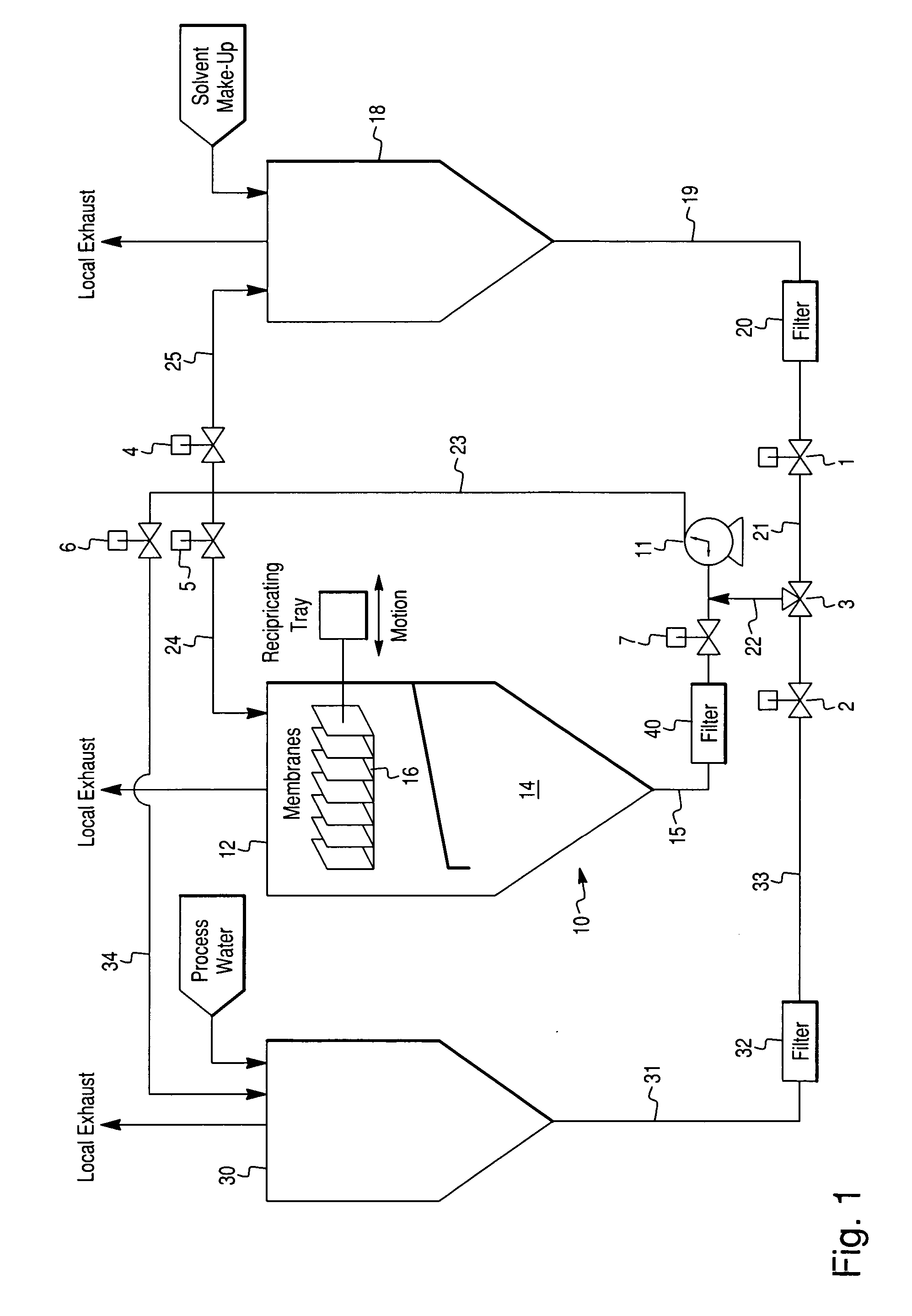Process for recycling components of a PEM fuel cell membrane electrode assembly
a technology of membrane electrode and fuel cell, which is applied in the direction of fuel cell disposal/recycling, cell components, electrochemical generators, etc., can solve the problems of high cost of low-temperature fuel cell efficient catalysts, high cost of proton exchange catalysts for fuel cells, and high cost of noble metals such as platinum, which are very expensive, so as to facilitate the subsequent recovery of individual layers
- Summary
- Abstract
- Description
- Claims
- Application Information
AI Technical Summary
Benefits of technology
Problems solved by technology
Method used
Image
Examples
example 1
[0034] It has been found that isopropanol mixed with various amounts of water disrupted the bond between Nafion® and the attached carbon catalyst layers. In the case of a three-layer membrane assembly, made up of anode, Nafion® and cathode, loss of adhesion between the membrane and catalyst layers is followed by dispersal of the catalyst layers. With the five-layer membrane (GDL / anode / Nafion® / cathode / GDL), the Nafion® separates from the exterior bilayers, and facilitates subsequent harvesting of the individual components. Table 1 represents the removal of the Nafion® membrane using isopropanol / water mixtures, water alone, ammonia, and an ammonia / water mixture. The MEA was immersed in the volume of solvent shown.
TABLE 1DIIsopropanolIsopropanolIsopropanolAmmoniaTimeSample #H2O35%70%91%(N / A)Separationapprox120 mlNoN / A220 mlYes12hrs320 mlYes0.5hr420 mlYes0.5hr520 mlNoN / A610 ml10 mlNoN / A720 mlYes0.5hr820 mlYes0.5hrAgitation920 mlYes1min38sec1020 mlYes30sec1120 mlYes25sec1220 mlYes28sec...
example 2
[0035] Membrane stripping experiments were performed using ultrasonic or hand agitation with different concentrations of methanol, ethanol, isopropanol, and butanol, See Table 2. The purpose of these experiments was to document the time and the manner in which (if at all) the black layers were stripped from the Nafion® membrane. High and low molecular weight alcohols were explored. The sample size used was 1 cm2 in 20 ml of solvent.
[0036] The 3-layer and 5-layer membranes were successfully separated from the black catalyst layers using methanol, ethanol, isopropanol, and butanol as solvents.
TABLE 2Run 1Run 2AverageNotesAlcoholConcentrationAgitation(min)(min)STD(min)Run 1Run 23 LayerEthanol35%Hand—1 BL, 1C, FBPEthanol35%Ultrasonic—1 BL, 1CIsopropyl35%Hand4:144:141 BL, 1C, CBP, GRIsopropyl35%Ultrasonic5:005:0 1 BL, 1S, FBPButanol35%Hand2:202:201 BL, 1C, CBP, GRButanol35%Ultrasonic3:303:301BL, 1C, FBPMethanol35%Hand—1 BL, 1CMethanol35%Ultrasonic—1 BL, 1C, FBP5 LayerEthanol35%Hand—3 ...
example 3
[0037] Experimental pre-treatment of MEA membranes were performed for removal of the GDL layer by boiling the MEA in water or hand stripping the GDLs. Different concentrations of isopropanol, 2-butanol and n-butanol, See Tables 3-5, were used to separate the membrane from the cathode and anode. The purpose of these experiments was to document the percentage of platinum recovered from new (See Tables 3 and 4), and used (See Table 5) MEA membranes using different methods for GDL removal and different concentrations of alcohol. The sample size used was 1 in2, and the solvent volume was variable, as described below.
[0038] Almost no difference in recovery of platinum was seen between differing GDL removal steps, or between different solvents, when treating used MEA membranes, See Table 5. However, differences in the method of removing the GDL layer had a major impact on subsequent processing of new MEA membranes, See Tables 3 and 4.
TABLE 3Pt recovered from new MEA membrane, supplier 1...
PUM
| Property | Measurement | Unit |
|---|---|---|
| crystallite size | aaaaa | aaaaa |
| crystallite size | aaaaa | aaaaa |
| power density | aaaaa | aaaaa |
Abstract
Description
Claims
Application Information
 Login to View More
Login to View More - R&D
- Intellectual Property
- Life Sciences
- Materials
- Tech Scout
- Unparalleled Data Quality
- Higher Quality Content
- 60% Fewer Hallucinations
Browse by: Latest US Patents, China's latest patents, Technical Efficacy Thesaurus, Application Domain, Technology Topic, Popular Technical Reports.
© 2025 PatSnap. All rights reserved.Legal|Privacy policy|Modern Slavery Act Transparency Statement|Sitemap|About US| Contact US: help@patsnap.com


